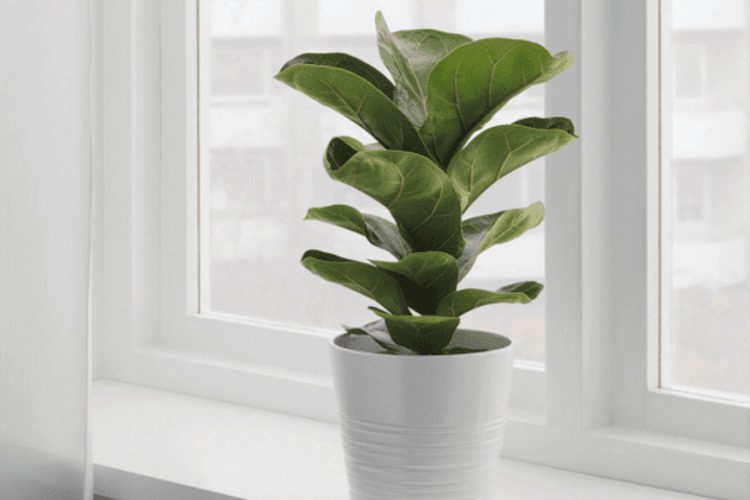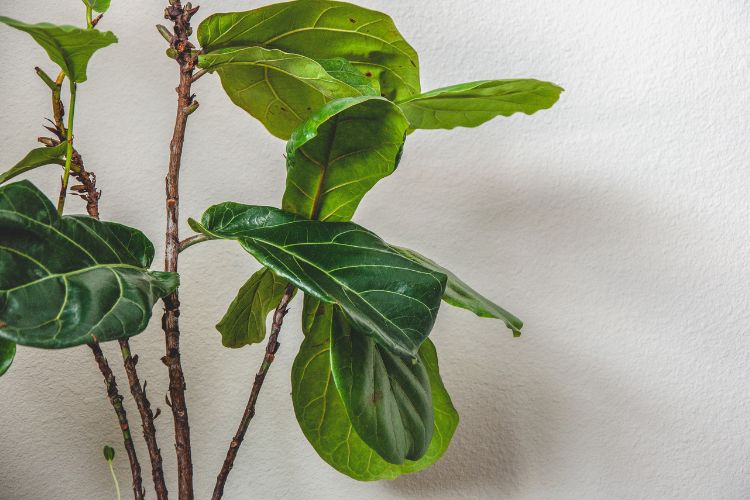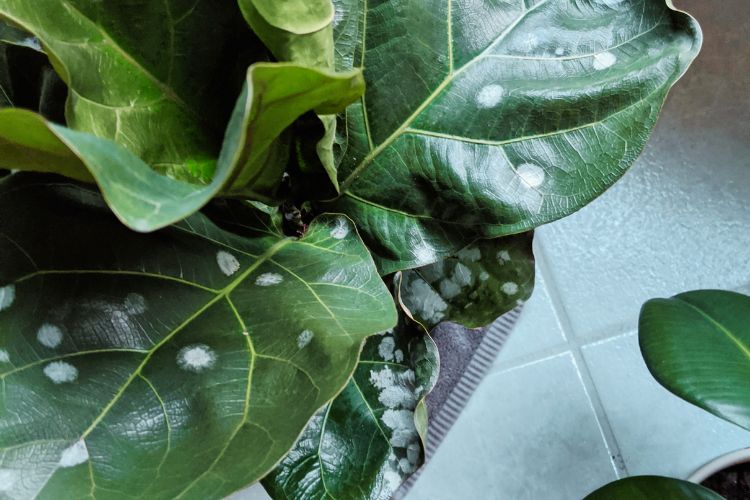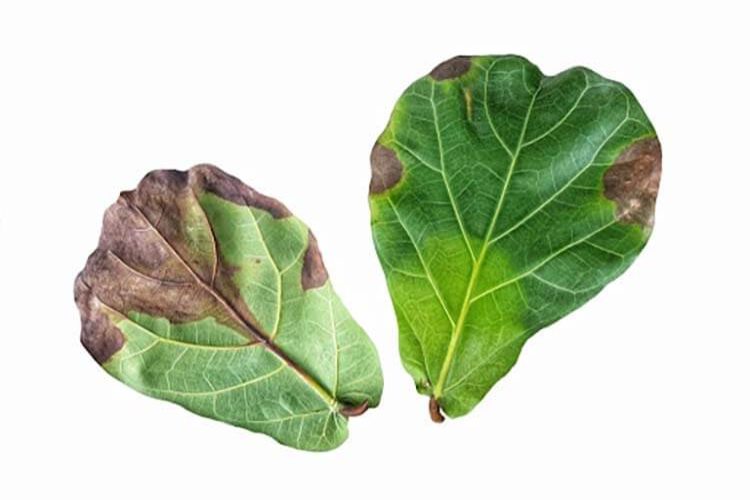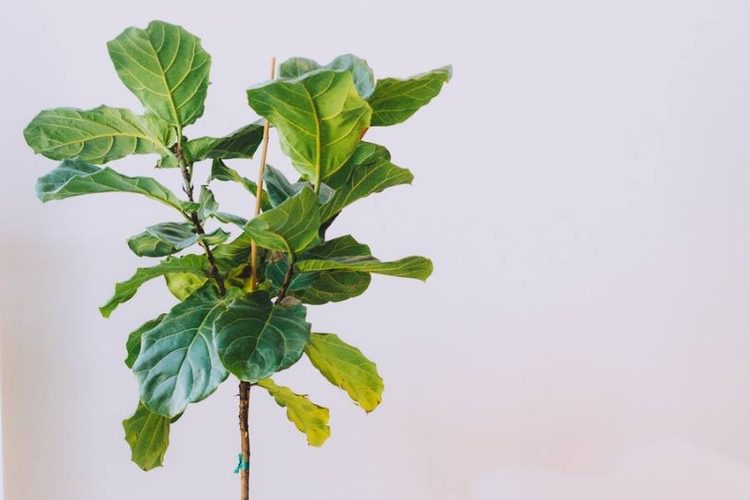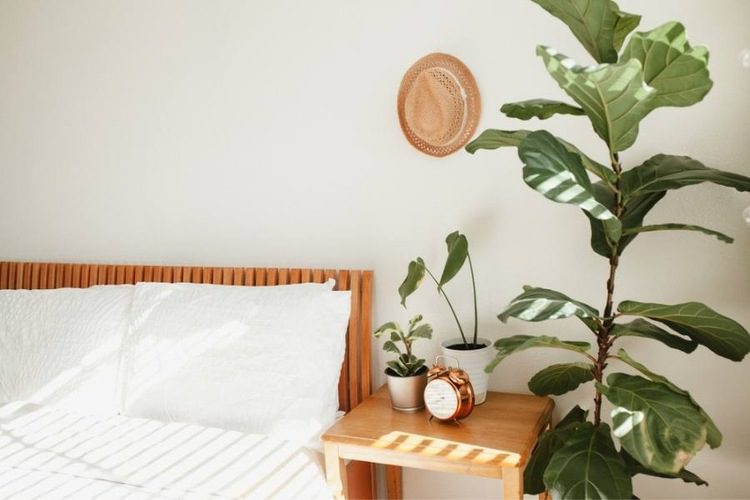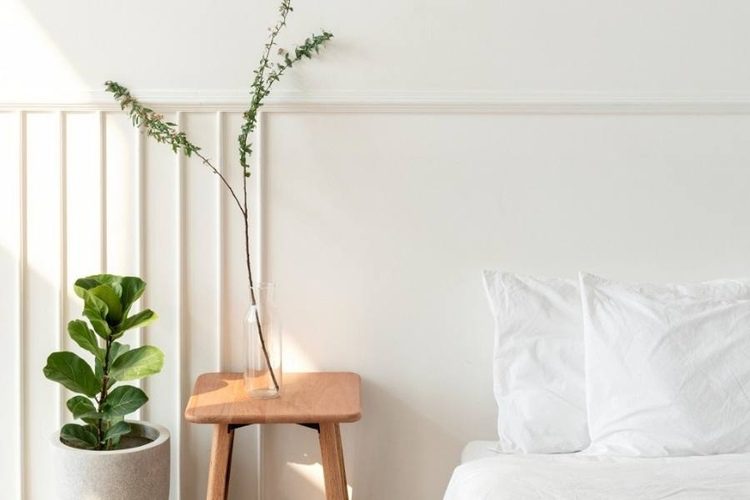Fiddle Leaf Fig Yellow Leaves: Challenging For Beginners
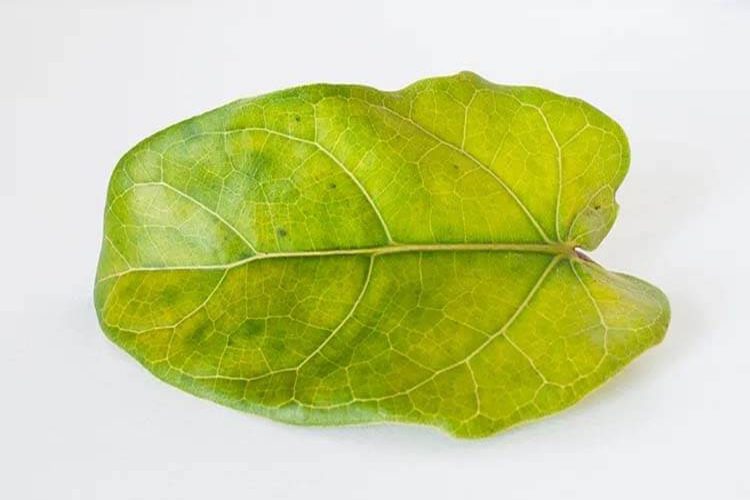
Fiddle-leaf fig leaves discoloration is one of the most prevalent issues that you could face. Yellowing leaves can seriously detract from the aesthetic of this kind of plant, which is known for its enormous, exquisitely green ones.
In such cases, what do yellow leaves indicate, and how can you fix them?
What causes the fiddle leaf fig leaves yellowing?
Lack of light, aging leaves, insects, overwatering, or some other reason are common causes that lead to yellowing leaves of fiddle leaf fig. Even the most seasoned gardener will get a little worried when their plants discolor because yellow leaves are almost always a sign of disease. Check out the causes of yellowing and how to solve it below:
Overwatering
The main reason why most indoor houseplants develop yellowish leaves is overwatering. Plants generally don’t like to sit in a lot of water. Pooling water may cause root rot, which will lead to your plant’s death.
Place your finger about 2 inches into the soil and feel for signs of overwatering. Does it seem damp? Wait till it dries before watering it again. Remove your plant from the pot if it is being excessively watered or has any extra water and soggy dirt, then repot the plant in new potting soil. Make sure that your pot has proper drainage holes to avoid further water accumulation.
Minimal humidity
Low humidity can induce leaf drop; however, it is far less common than overwatering. Typically, the leaves develop crispy, browned patches (often on the tips) and might then start to yellow. Underwatered plants have crispy brown areas and a sad, wilted appearance. Frequently, the soil shrinks and dries up, creating a space between it and the pot’s rim. These signs are indications of a plant drying out. Misting the leaves might assist in increasing the humidity in the air since the water droplets on them and the soil after watering will evaporate.
Inadequate lighting
Insufficient light can also cause yellow leaves. Fiddle fig plants require a bit of direct sunlight. Without it, it will perish. The leaves of your indoor plants may begin to droop and change to yellow if they don’t receive enough light. Older leaves at the plant’s base will be affected by this more than other ones. Move your outdoor fiddle leaf figs into bright, direct light to solve the problem. It will be a lot more joyful.
Root-bounded plant
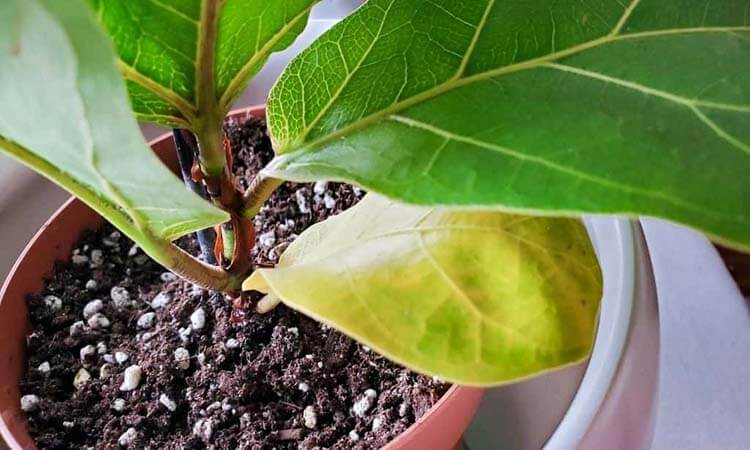
Your fiddle leaf fig plant may have developed a root bind. In essence, the container cannot accommodate the plant’s roots. Examine your plant’s root if you can get it out of the pot! This is a serious possibility if it has been there for some time.
It’s time for a bigger pot if the roots are firmly balled up or even sticking out of the drainage hole. For a healthier plant, add some fresh potting soil while you’re at it! Besides, you should be aware of the soil acidity, which can cause stress and leaves to turn yellow for your plant.
Older age
It is normal for some older leaves to turn yellow and fall off as plants age, making a place for new growth. Some plants choose to direct the energy required to keep a leaf green into growing new plants instead.
Consider it as the plant using resources from older growth to fuel new leaves. It’s time to pass on a wonderful life to the next generation. If this is the case, just the foliage close to the plant’s base will be yellow; no signs of a growing season should appear. This may also indicate that you should fertilize since the soil is deficient in nutrients.
Pests
Aphids or maggots could attach to the foliage and deprive your plants of their nutrition. Separate your plant if you think it may have pests to possibly prevent the infestation from spreading to other plants.
How to recover Fiddle Leaf Fig discolor to yellow?
Knowing the source of your fiddle leaf fig’s distress makes it immensely simpler to aid in its recovery. Fortunately, there are only a few causes for leaves to turn yellow, and as this post’s previous section explained, it’s rather simple to identify which one may be the problem.
Finding the source of the issue is the first step in treating them discolor to yellow. It could be caused by inadequate lighting, insufficient fertilizer, poor drainage and overwatering, an infection, or poor growth circumstances. According to that, resolving the root of the issue is necessary to fix your plant’s yellow petals.
Give your fiddle fig plant exposure to the sun
Sunlight is extremely important to the health of fiddle leaf figs. Move your plant to a location where it can receive the energy it needs from the sun if it is yellowing due to inadequate light. In light of this, you should carefully adapt your plant to its new location so as not to startle it. Move it gradually closer to the sun, starting with a daily exposure of 15 minutes and increasing the time over time. Try to place it close to an east or south window for softer morning light.
Read more: Best Grow Light For Fiddle Leaf Fig: 4 Solutions For Growth
Regularly feed your fiddle leaf
If your fiddle leaf fig is deficient in nutrients as a result of poor soil quality or irregular feeding, you can correct this by giving it a dose of nitrogen-rich, organic fertilizer. Fiddle figs require a lot of energy; therefore, fertilizer is standard practice if you’re growing them at home.
Pest control for your fiddle leaf
On a fiddle leaf fig, pests are fortunately rather simple to eradicate. Use neem oil or insecticidal soap to treat your plant, and be sure to spot each leaf afterward. Your fiddle fig should be clear of pests in no time.
Be cautious to maintain a regular watering schedule and appropriate drainage
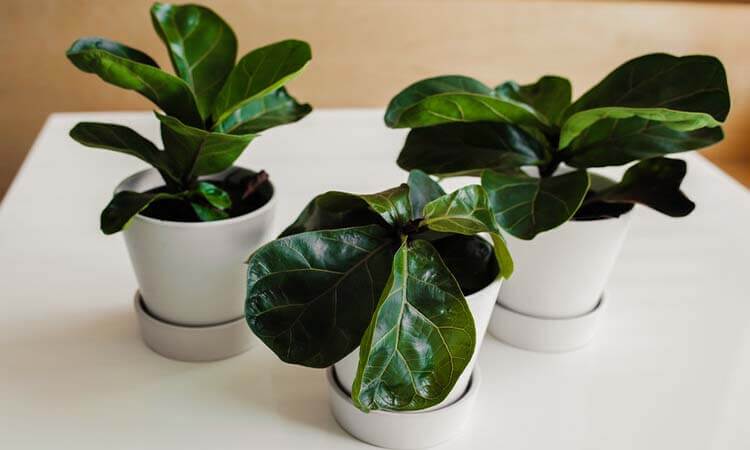
You’ll want to take extra precautions to avoid overwatering your fiddle leaf if you think it could be experiencing root rot. Begin by making sure none of the openings in the pots of your fiddle fig plant are blocked or jammed.
Give your plant some time to dry off after that. This implies that before watering, the top few inches of soil must be dry. Maintain a regular schedule after you start watering your plant. To prevent root rot from occurring, it is essential to provide enough drainage for your potted plants.
Make sure your fiddle leaf is content with its surroundings
Absolute, adaption toward the fiddle leaf fig’s surroundings is by far the hardest issue to identify. That’s a deductive activity. Is anything at all that wrong? Fiddle leaf figs occasionally simply disagree with their location. Keep your dark green leaf plant in a location with plenty of sunshine and moisture, but no artificially chilly or hot temperatures to prevent this.
FAQs


